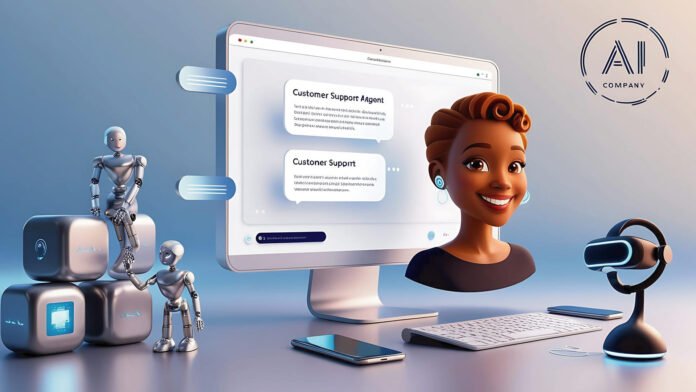In the past, recruitment still had a playbook that was reactive by nature, wherein the human resource department would await the submission of resumes and then would sift through them manually. The world of today does not just have an inefficient model; it poses a dangerous weak point. The new imperative to leadership is to go beyond just automation to one that is more proactive, data-driven, which denotes an altogether new era of Smarter HR.
This is not a theoretical discussion about the future. It is a strategic mandate for 2025. With a staggering 99% of hiring managers now using AI in some capacity, according to a recent Insight Global report, the question is no longer whether to adopt AI in hiring, but how to deploy it to gain a strategic edge across the entire lifecycle, from job description to offer.
Table of Contents
The Strategic Imperative for Smarter HR
The Hiring Lifecycle Redefined
Beyond the Job Description
Proactive Sourcing and Smart Matching
Building Trust Through Ethical Guardrails
A Personalized Candidate Journey
Making a Data-Driven Offer
The Human in the Loop
The Strategic Imperative for Smarter HR
There is a change in the business argument of AI. Business impact, when compared against time saved and cost reduction, is the new measurement that is being used. C-suite executives are insisting on the tangible ROI that can be reflected in terms of enhanced retention, a better quality of hire, and shortened time-to-productivity. It goes beyond mere automation of tasks to be a strategic partner and provide augmented human judgment based on predictive analytics. This change shifts the meaning of being effective in talent acquisition since it now becomes about being competent in hiring as well, since it should not be viewed as a goal anymore.
This new reality presents a challenge. The proliferation of generative AI has created an “application avalanche,” where candidates can now apply for hundreds of roles with AI-optimized résumés and cover letters. This surge in volume makes it harder for talent teams to find the needle in the haystack. The solution is not more manual effort, but a more intelligent pipeline powered by a purpose-built AI in hiring a smarter HR strategy. Companies that effectively harness this will save up to 40% in recruitment spend and cut time-to-hire by half, according to case studies compiled by MiHCM.
The Hiring Lifecycle Redefined
The traditional hiring journey is being disassembled and rebuilt with intelligence at its core. This is where the strategic opportunity lies, transforming every touchpoint from initial thought to a signed offer letter.
Beyond the Job Description
The human resources process of job description begins with a discussion between the business and AI. Instead of using boilerplate language, AI-based tools can help analyze both market and internal success profiles to create job description documents that are inclusive and precise in the strategy adopted. Not only do these tools minimize biased language, which is a paramount issue in a strictly regulated environment, but they also make the description more optimal in appealing to a greater number of qualified and diverse talent. This will be the first move towards a fair and efficient process.
Proactive Sourcing and Smart Matching
AI is an arsenal of genius. It changes the active direction of merely scrutinizing candidates to mapping and actively reaching out to prospective high-potential candidates before they become available in the market. With the use of predictive analytics and past data, AI draws trends that showcase a pattern of success and highlights those candidates that are a good fit, even when they do not apply directly. This propels a new chief talent acquisition model where teams can form relationships with the future talent by today.
Building Trust Through Ethical Guardrails
Since the EU AI Act categorizes AI in hiring as high risk, it is critical to have trust and transparency. C-suite should make ethical guards, governance, and continuous monitoring a priority. Effective organizations are setting up so-called human-in-the-loop monitoring, in which AI makes recommendations that are examined by a human being. This helps leaders be certain that their Smarter HR is fair, safeguards the brand, and protects them throughout the whole process of job description, to offer a process. Another study conducted by McKinsey reveals that the top organizations are assigning top managers to pivotal positions to govern AI and address the emerging risks.
A Personalized Candidate Journey
The experience of candidates is an effective brand asset, and AI takes it to a new height. Chatbots that are AI-based offer 24/7 support and respond to most common questions and offer career advice to candidates in terms of completing the application process. This one-on-one, full-service treatment eliminates drop-off rates and boosts completion rates by leaps and bounds. It makes the transition of HR to offer so smooth and so interesting because routine operations are automated, such as scheduling interviews and providing timely updates. These firms enjoy an average 15-cent better score in candidate satisfaction with those companies that use this individualized approach.
Making a Data-Driven Offer
The end result of an intelligent hiring must be a well-informed decision with confidence. Unlike the examining résumé infant, AI offers a wealth of transitory knowledge that considers such factors as job success potential, tech aptitude, and even cultural control. Such intelligence will enable hiring managers to make more informed decisions to avoid a bad hire. This is the end game of hiring with a successful AI of job description to offer pipeline, transforming an educated guess into a strategic, data-based decision.
The Human in the Loop
AI will not eliminate the recruiters. It will enable them to center their priorities on what is important, the human interaction. The role of AI is to relieve recruiters of administrative responsibilities so that they can take on the roles of strategic advisors, relationship builders, and brand ambassadors. The human factor, which is nuancing, emotional, and tactical decision-making, is always the last and most important puzzle element. The new relationship demands a modern, composable HR tech stack, capable of smoothly integrating AI tools into it. In this modern era of work, legacy systems will turn out to be a formidable competitive drawback.
It is not AI-driven that determines the future of work; rather, it is human and AI-enhanced. Smart firms that will succeed are the firms that do not see AI in recruitment as a method of efficiency, but as a strategic asset for the construction of a superior, brighter, and more sustainable labor force. This is the frontier in talent and leadership who would now adapt to it would be in a vantage position to win perfectly.
Explore Hrtech Articles for the latest Tech Trends in Human Resources Technology












